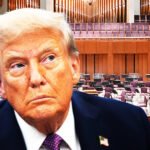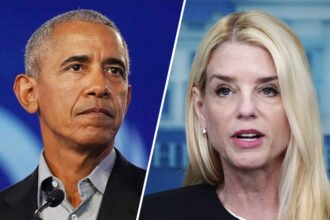President Donald Trump is bringing back one of his most controversial policies. On Wednesday, he announced a new travel ban that will stop citizens from 12 countries from visiting the United States. People from seven other countries will face tougher travel restrictions.
The ban starts Monday at 12:01 a.m., giving some time to prepare — unlike the sudden announcement in 2017 that caused chaos at airports. Trump says this time it’s on solid legal ground after the Supreme Court supported him.
The 12 banned countries are: Afghanistan, Burma (Myanmar), Chad, the Republic of Congo, Equatorial Guinea, Eritrea, Haiti, Iran, Libya, Somalia, Sudan, and Yemen.
Visitors from Burundi, Cuba, Laos, Sierra Leone, Togo, Turkmenistan, and Venezuela will face extra restrictions.
Trump tied the new ban to a terror attack that happened last Sunday in Boulder, Colorado. The attacker was from Egypt, which is not on the banned list, but he had overstayed his visa. Trump said the attack “underscored the dangers posed by some visitors who overstay visas.”
He blamed some countries for “deficient” screening and vetting and accused others of refusing to take back their own citizens. Trump used a government report showing which countries have the highest rates of people overstaying visas as the basis for the ban.
In Trump’s words, “We don’t want them.”
The inclusion of Afghanistan angered many who have supported resettling Afghan refugees, especially those who worked with the U.S. during the long war there. The ban does make exceptions for Afghans on Special Immigrant Visas — usually those who helped American forces.
Afghanistan was one of the biggest sources of refugees resettled in the U.S., with about 14,000 arriving in the past year. But Trump shut down refugee resettlement the day he took office.
Shawn VanDiver, president of #AfghanEvac, called the ban “a moral disgrace” and said, “It spits in the face of our allies, our veterans, and every value we claim to uphold.”
Trump wrote that Afghanistan “lacks a competent or cooperative central authority for issuing passports or civil documents” and has poor screening. He also cited its high visa overstay rates.
Haiti, left off the ban during Trump’s first term, is now included for similar reasons. Haitians are fleeing poverty, hunger, and gang violence, but Trump claims, “Haiti lacks a central authority with sufficient availability and dissemination of law enforcement information necessary to ensure its nationals do not undermine the national security of the United States.”
Iran, described by the Trump administration as a “state sponsor of terrorism,” was also banned. Visitors already holding visas or those on special visas for minorities facing persecution are allowed.
Other Middle Eastern countries on the list — Libya, Sudan, and Yemen — are all fighting civil wars or facing ongoing conflicts.
Humanitarian groups and refugee organizations have condemned the ban. Abby Maxman, president of Oxfam America, said, “This policy is not about national security — it is about sowing division and vilifying communities that are seeking safety and opportunity in the United States.”
This new ban follows an executive order Trump signed on January 20 that required government agencies to report on “hostile attitudes” toward the U.S. and potential security risks from certain countries.
In his first term, Trump imposed a similar ban on seven mostly Muslim countries: Iraq, Syria, Iran, Sudan, Libya, Somalia, and Yemen. That ban caused chaos, with travelers detained or blocked from boarding flights. It was called the “Muslim ban” by critics and was changed after legal battles. The Supreme Court eventually approved a version in 2018.
Trump and his supporters say the ban is about protecting national security, not discrimination. But during his 2016 campaign, Trump called for a total ban on Muslims entering the U.S.















